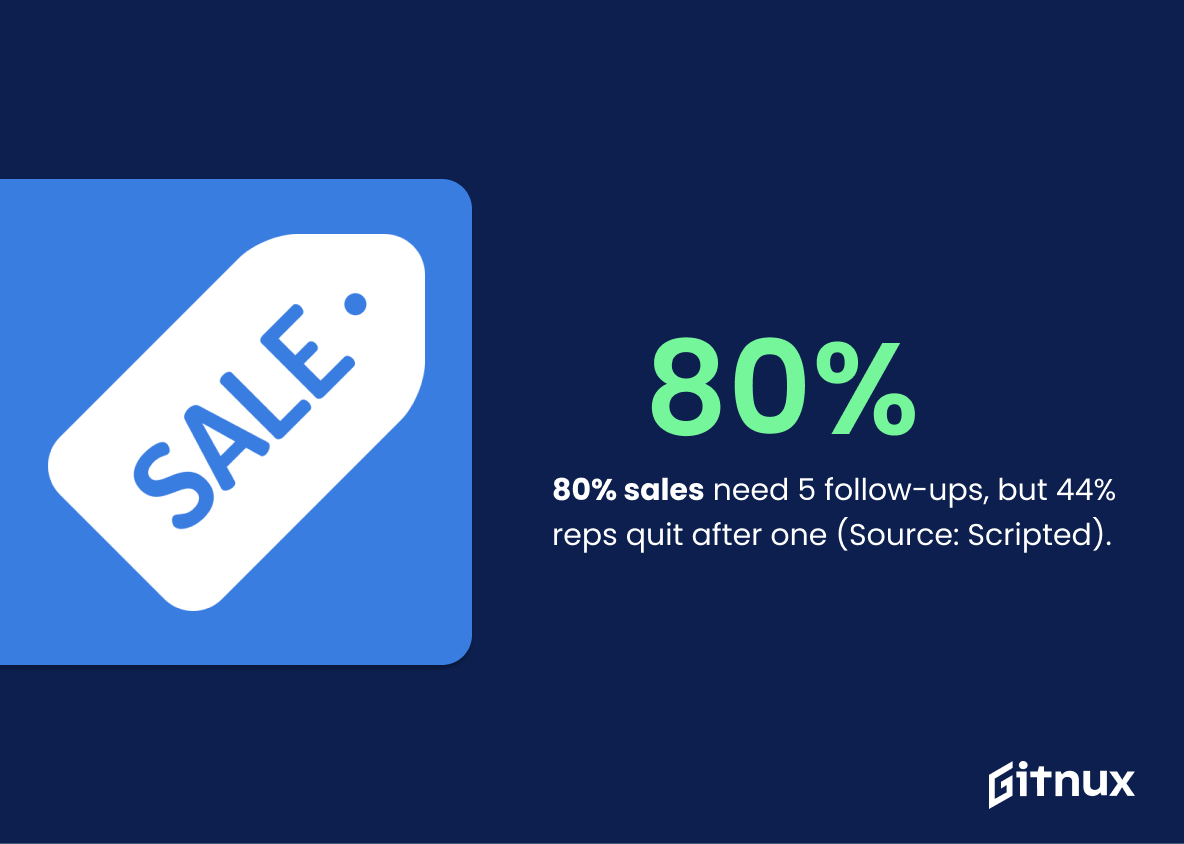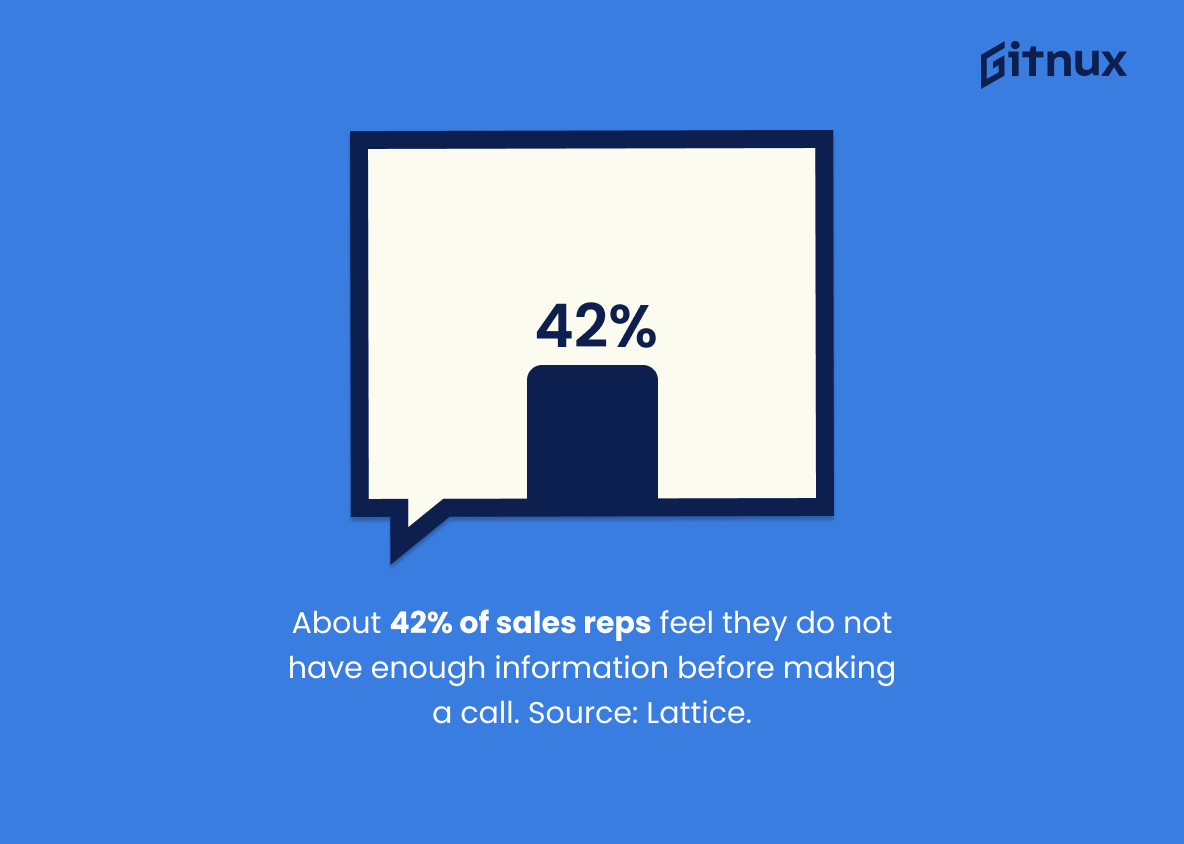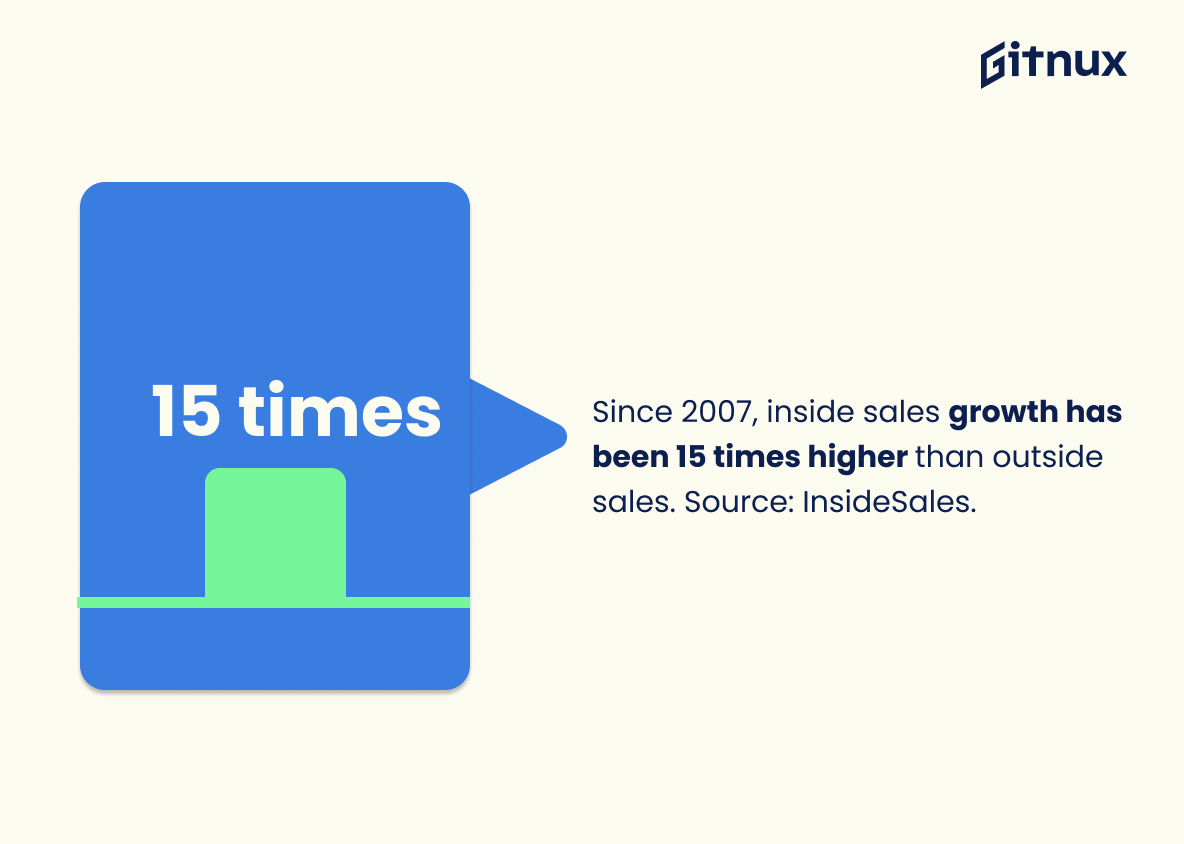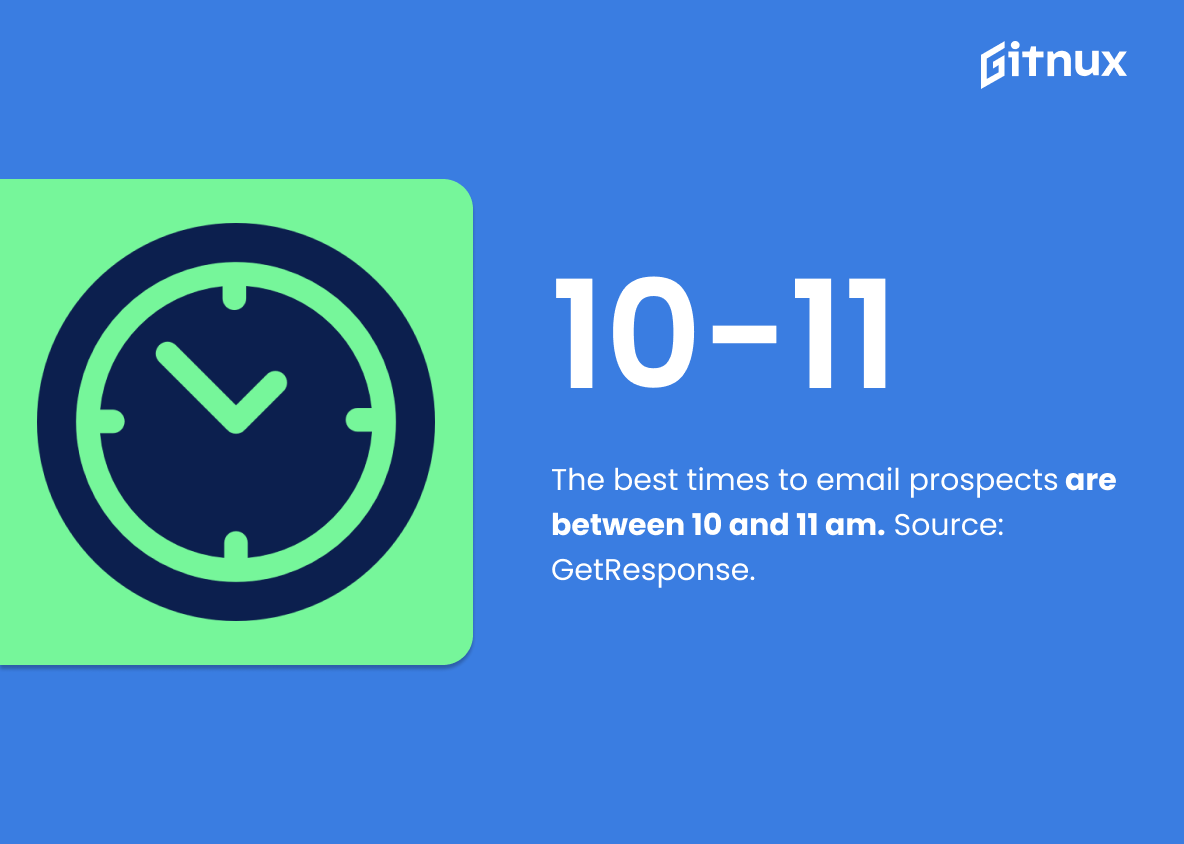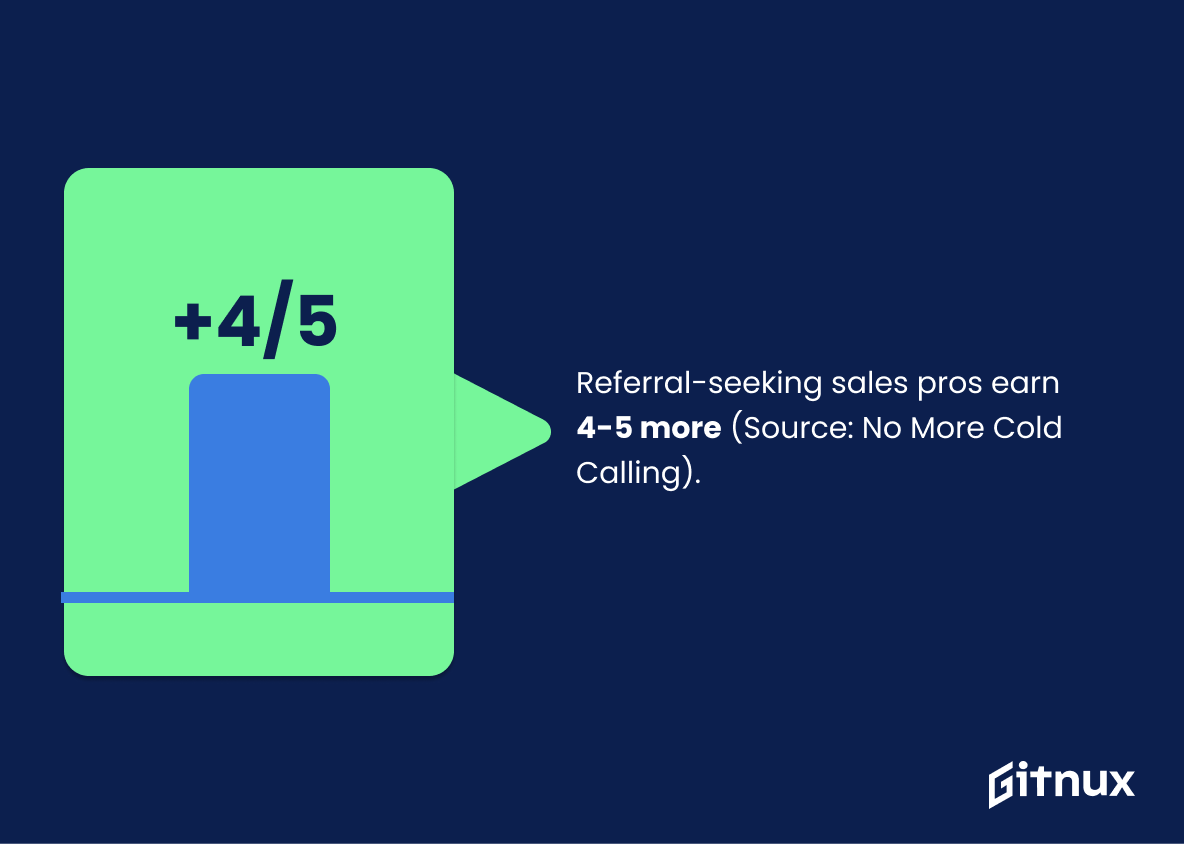In the dynamic world of sales, understanding the trends, patterns, and statistics around prospecting can be a game-changer. With the ever-changing marketplace, it’s crucial to stay abreast of the current sales prospecting statistics to refine sales strategies, streamline workflows, and close deals effectively.
This blog post dives deep into insightful data, compiled from various credible sources, shedding light on the significant numbers that can help shape and elevate your business’s sales prospecting efforts. Whether you’re a seasoned sales expert or a budding professional, these stats offer valuable knowledge to help you navigate the realm of sales prospecting with confidence and precision.
The Latest Sales Prospecting Statistics Unveiled
80% of sales require five follow-up calls after the meeting, yet 44% of sales reps give up after one follow-up. Source: Scripted.
In the bustling realm of sales, the art of persistence is often underestimated. Carefully examine this intriguing statistic – 80% of sales necessitate five follow-up calls post-meeting, while a startling 44% of salespeople wave the white flag after just one attempt. It’s an eye-opening revelation, especially to the sales professionals striving to improve their sales prospecting outcomes. This illustrates the potential goldmine hidden within the diligence of repeated follow-ups.
To add some perspective to these numbers, imagine an ocean full of potential clients. A whopping 44% of sales reps are casting their nets only once, potentially missing out on a huge haul. Meanwhile, those who are relentless, who cast their nets five times, are finding their sales potential amplified to 80%.
This statistic underscores an urgent call for transformation in sales prospecting strategies, emphasizing the potent mix of persistence and consistency. It’s an alarming wake-up call to the 44% of sales reps who are missing considerable opportunities by stepping back too soon. An important lesson emerges – success in sales is not just about making the first contact but nurturing that relationship with robust follow-ups until the deal is sealed.
About 42% of sales reps feel they do not have enough information before making a call. Source: Lattice.
Delving into the realm of sales prospecting, this particular statistic stands as a critical pillar. With approximately 42% of sales representatives feeling inadequately prepared before making a client call, the importance of thorough research and information gathering emerges with stark clarity. This statistic underscores the reality that sales success goes beyond mere charisma or sales tactics.
Instead, it highlights that understanding client needs, market dynamics, and product knowledge are paramount. Integrating this insight into strategies could potentially revolutionize how sales teams approach their process, significantly influencing the efficiency and effectiveness of their prospecting efforts. Thus, shedding light on this statistic brings to the foreground a crucial necessity for improvement in the preparatory phase of sales prospecting.
Nearly 50% of your prospects are not a good fit for what you sell. Source: Hubspot.
Painting a stark picture of reality, this telling statistic from Hubspot effectively highlights the challenging landscape salespeople face in successful prospecting. It’s a solid revelation that nearly half of potential prospects might not suit what you’re selling. This demands a re-evaluation of one’s selling strategies, allowing sales teams to refine their approaches, focus on qualifying leads, and maximize efficiency.
In recognition of this truth, sales professionals will gain insight into the necessity of targeted selling, sparing company resources and enhancing the chances of reaching relevant buyers. Ultimately, this statistic serves as a sales compass, directing one’s efforts where they are most potentially lucrative.
Since 2007, inside sales growth has been 15 times higher than outside sales. Source: InsideSales.
Viewing the riveting evolution of sales strategies from 2007 onwards, it’s essential to glance at the inside sales growth—rocketing at a magnificent pace, 15 times greater than outside sales according to a study by InsideSales. Now, why is this nugget of insight worthwhile in our discourse on Sales Prospecting Statistics?
In the intriguing playfield of sales, the forward momentum of inside sales is a testament to the shifting tendencies in buyer behaviour and evolving preference for virtual engagements over face-to-face handshakes. It highlights the increasing acceptance of remote selling models, thereby pushing companies to rethink their prospecting strategies, cultivate digital talents, and leverage technology to sustain in this highly competitive space.
Moreover, this upward trajectory of inside sales underlines significant cost-efficiency; lower travel expenses, quicker prospect reach, and scalability that it offers, invoking businesses to reconsider their sales investment decisions. Finally, it brings a pulse to the burgeoning importance of data-driven strategies, with inside sales often relying heavily on CRM systems, lead scoring, and analytics, enhancing the overall effectiveness of sales prospecting.
It takes an average of 18 calls to actually connect with a buyer. Source: Telenotes.
As we venture into the intricate world of sales prospecting, our curiosity is greeted by a fascinating statistic from Telenotes which tells us about an ominous number – 18. This is not a random figure, but the average number of calls an salesperson has to make before they are successful in establishing a connection with a prospective buyer. This highlights the brutal reality of rejection which lies at the heart of every sales process.
Understanding this quantification is key to acknowledging the endurance required in the journey of sales prospecting. It blends the scale of persistence with the unpredictability of outcomes. It doesn’t necessarily mean that every 18th call will be a success, but it certainly offers a ballpark to calibrate our expectations and fuel our perseverance.
In the context of sales prospecting, appreciating this statistic could empower us to devise more effective strategies. It could initiate exploration into figuring out the reasons for such an extent of unsuccessful attempts. Or, it could inspire research on enhancing communication skills and approaches for optimal engagement within these 18 trials. Ultimately, this statistic offers not just a reflection of the current sales scenario but also a launch pad towards more targeted and efficient methodologies.
The best times to email prospects are between 10 and 11 am. Source: GetResponse.
Imagine dialing into the rhythm of your potential customers, knowing the perfect time to launch your email into their inbox, landing just as they’re sipping their mid-morning coffee, ready to tackle new opportunities. The statistic from GetResponse provides such insight for sales teams, pinpointing an optimal window – between 10 and 11 am – as the golden hour for connecting with prospects.
In a blog post about Sales Prospecting Statistics, this nugget of information is of significant value. It directly informs strategy, allowing sales teams to fine-tune their outreach efforts. When competition for attention is fierce, having the knowledge of when your prospects are most willing to engage can give you the upper hand, and significantly increase your probability of making that all-important sale.
In other words, it’s not just a fact, but a key for unlocking potential customer engagement, sharpening strategies and optimizing sales prospecting activities. When it comes to crafting a persuasive sales narrative, it’s the small details like these that can paint a picture of success in the reader’s mind.
More than 40% of salespeople say that prospecting is the most challenging part of the sales process. Source: Hubspot.
Understanding that more than 40% of salespeople cite prospecting as the most arduous part of the sales process serves as a poignant lantern, casting its illuminating insights on the rough terrains of the sales world. In the narrative tapestry of a blog post focused on Sales Prospecting Statistics, this statistic emerges as a major plot point, highlighting the significance of mastering prospecting skills. It snaps into focus, an undercurrent of struggle experienced by the very lifeblood of any sales-driven organization, their salespeople.
Equipped with this knowledge, companies and training programs can direct their efforts towards refining prospecting methods, thereby aiming to enhance overall sales outcomes. The statistic also resonates with the frontline salespeople, making them feel understood, flagging the importance of continuous skill development in their most challenging area.
High-performing sales teams spend, on average, 12.3% more time on sales prospecting activities. Source: Xant.
Diving into the world of sales, one can’t help but be captivated by the power of numbers. Consider this intriguing find from Xant – high-performing sales teams devote an additional 12.3% time exploring sales prospecting activities compared to their counterparts. Picture this as the secret sauce, the magic potion, setting the high-flyers apart.
Why, you ask? It drives home a pertinent point in a selection of Sales Prospecting Statistics – investing more time in prospecting is not an option but a vital strategy for those chasing excellence and higher achievements. This nugget of wisdom underscores the strong correlation between time spent on prospecting and commendable sales performance. Calling attention to this could prove transformative for sales teams aiming to revamp their processes and boost their performance.
Sales pros that seek out and use referrals earn 4-5 times more than those who don’t. Source: No More Cold Calling.
The zest of this compelling statistic lies in successfully underscoring the intrinsic value of leveraging referrals within sales prospecting. It shouts loudly to everyone in the sales industry that traditional methods of cold calling are being unseated by the dynamic power of referrals. Not just a minor bump in success, but a gigantic boost to earnings–as much as four to five times more.
This paints a stark contrast against the often dismal returns from cold calling and sends a clear message: In the modern economy, nurturing robust referral networks is not just an option, it’s essential for sales survival. This revelation undeniably makes sales prospecting via referrals a tour de force in propelling sales performance skywards.
The average sales rep only makes 2 attempts to reach a prospect. Source: SiriusDecisions.
Delving into the realm of sales prospecting statistics, it’s illuminating to observe that the average sales rep only makes 2 attempts to reach a prospect, according to SiriusDecisions. This nugget of insight is fundamentally important in exploring the dynamics of sales engagement. It not only underscores the need for persistence in sales prospecting but also raises critical questions about the adequacy of two attempts in reaching a prospect effectively.
If, as a sales rep, your effort caps at two attempts, you may be relinquishing opportunities prematurely, and this statistic serves as a wake-up call to reassess your prospecting strategies for more positive outcomes. Furthermore, understanding this statistic can help shape future sales training programs emphasizing the significance of follow-up and perseverance, thereby enriching the discussion in the blog post on sales prospecting statistics.
80% of buyers prefer to be contacted via email. Source: MarketingSherpa.
In the realm of sales prospecting, understanding your potential buyer’s preferences is paramount. Now, allow this statistic to paint a vivid picture: “80% of buyers prefer to be contacted via email.” (MarketingSherpa). This is not merely a statistic. It’s a compass guiding contact strategy, a tangible insight into the buyer’s world. An email, unlike a cold call, is not an intrusion but a pertinent item in a digital letterbox, waiting to be accessed at the viewer’s leisure.
Within this understanding, the space to craft personalized, engaging messages emerges, fostering stronger relationships and consequently, increasing the chances of effective sales prospecting. Since the majority of buyers show a clear preference for email contact, your sales team could be significantly skewing conversion rates in their favor by using this method. Remember, the realm of sales is not just about selling, it’s about resonating with consumers in ways they find preferable and comfortable.
Nearly two-thirds of marketers (64%) say that email is their most effective channel for prospecting. Source: DMA.
Unearthing this golden nugget of information gives marketers, particularly those in the sales prospecting domain, a lucrative direction to channel their efforts. The statistic underscores the power of email as a prospecting instrument, commanding the attention of an impressive 64% of marketers. In the ongoing hunt for strategies that yield the highest ROI, leveraging email as a primary tool emerges as a winning play, according to DMA.
Simultaneously, it illuminates the need to refine email marketing skills and devise innovative strategies to make the most out of this preferred channel. The data beckons every marketer engaged in sales prospecting to revisit their stance on the utility of email marketing, and maybe even consider restructuring their strategies around it. Unveiling the potential of email for prospecting, this statistic serves as a game-changer in the world of sales prospecting statistics.
78% of business sales come from personal connections and networking. Source: Referral SaaSquatch.
Delving into the sales prospecting world, one cannot dismiss the potency of the calculated digits. The statistic revealing that a staggering 78% of business sales spring from personal connections and networking whispers a whole lot about the sales landscape. It’s not merely a number but a silent strategist, unraveling the secret minefields of prospective sales opportunities.
Pulled from the archives of Referral SaaSquatch, this very figure underscores the critical role that personal rapport and cultivated connections play in the grand scheme of sales prospecting. It’s like a beacon illuminating on this often overlooked pathway to success in sales, where digital turbulence can feel like an overwhelming norm.
A deep dive into this statistic is akin to uncovering a hidden sales gem; it reinforces the value of human interactions in a world teetering on the edge of impersonal mechanization. In a blog post about Sales Prospecting Statistics, it therefore emerges as a call for nurturing authentic relationships and building trust-laden networks. Advocating not merely for cold numbers, but warm handshakes.
Sales teams that utilize social selling hit quota 31% more than teams who stick to traditional tactics. Source: LinkedIn.
The statistic unveils a compelling revelation for businesses keen on supercharging their sales prospecting efforts. The data piece states that sales teams applying social selling methodologies surpass their sales quotas 31% more than their counterparts resorting to traditional selling techniques, according to LinkedIn. This becomes a game-changer, shedding light on the relentless power of social selling when it comes to increasing sales predictability and instantiating lead conversion.
In a blog post centered around Sales Prospecting Statistics, this metric acts as a compass, guiding sales teams to redefine their strategies for improved outputs. Amidst the rapidly advancing digital space, it underlines the immeasurable potential of leveraging social media not just as a networking tool, but a potent platform for spearheading sales and achieving set quotas.
The message is clear and staggeringly powerful: Transitioning from traditional methods to social selling is no longer only an option, but a necessity. For it holds the key to unfastening the doors towards higher profitability, strengthened brand visibility, and ultimately, unparalleled sales growth.
Conclusion
Sales prospecting is an essential cog in the wheel of successful selling. As these statistics demonstrate, a solid strategy for prospecting can significantly enhance lead generation and drive conversions.
By understanding and harnessing the power of key metrics, modern salespeople can target their prospecting efforts more effectively, improve their efficiency, and boost their overall sales performance. Nonetheless, the world of sales is dynamic, and keeping abreast of the latest trends and statistics is crucial. Stay informed, adjust your strategies, continuously innovate, and see your sales graph take off.
References
0. – https://www.www.scripted.com
1. – https://www.www.lattice-engines.com
2. – https://www.www.xant.ai
3. – https://www.dma.org.uk
4. – https://www.www.hubspot.com
5. – https://www.business.linkedin.com
6. – https://www.www.siriusdecisions.com
7. – https://www.telenotes.com
8. – https://www.www.nomorecoldcalling.com
9. – https://www.www.insidesales.com
10. – https://www.www.getresponse.com
11. – https://www.www.marketingsherpa.com
12. – https://www.www.referralsaasquatch.com
